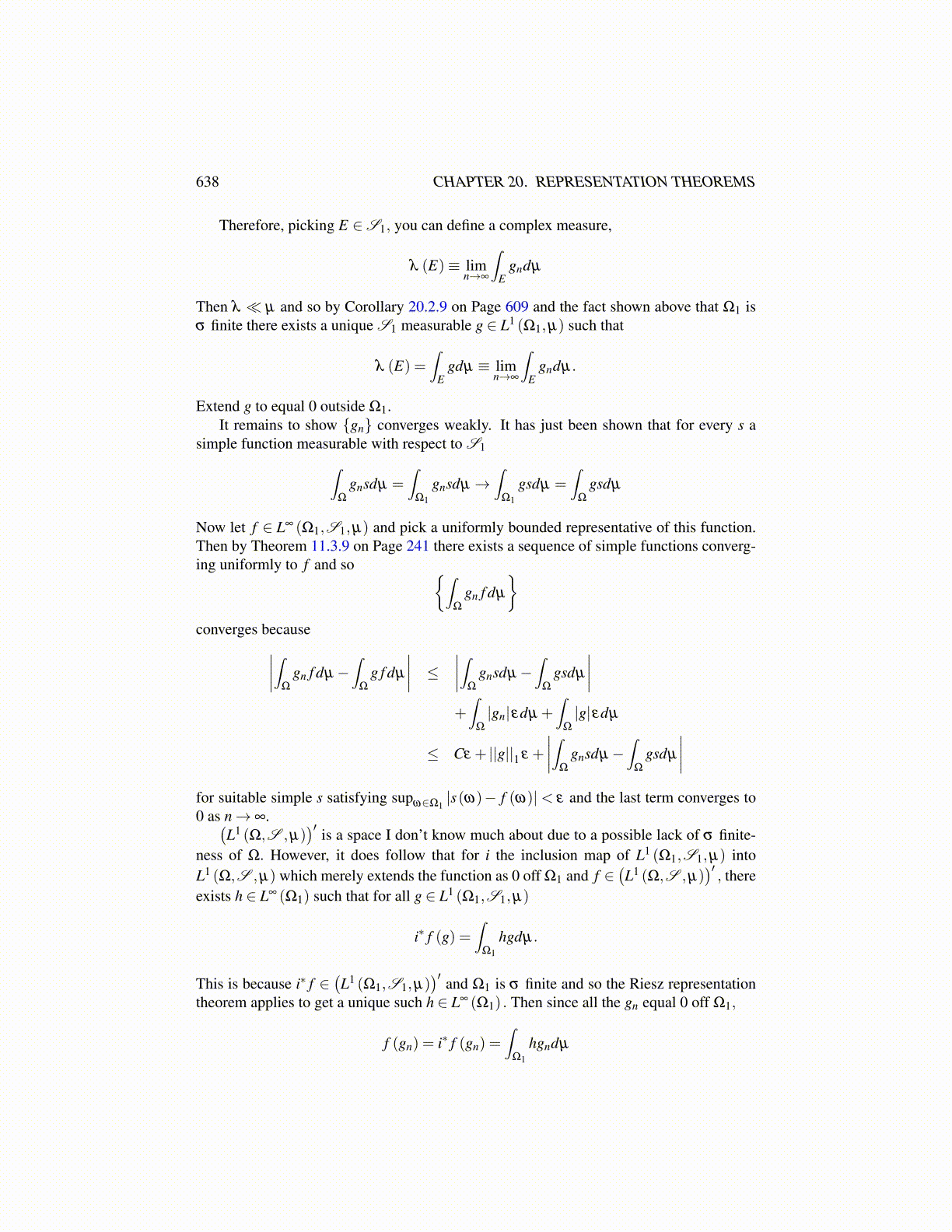
638 CHAPTER 20. REPRESENTATION THEOREMS
Therefore, picking E ∈S1, you can define a complex measure,
λ (E)≡ limn→∞
∫E
gndµ
Then λ ≪ µ and so by Corollary 20.2.9 on Page 609 and the fact shown above that Ω1 isσ finite there exists a unique S1 measurable g ∈ L1 (Ω1,µ) such that
λ (E) =∫
Egdµ ≡ lim
n→∞
∫E
gndµ.
Extend g to equal 0 outside Ω1.It remains to show {gn} converges weakly. It has just been shown that for every s a
simple function measurable with respect to S1∫Ω
gnsdµ =∫
Ω1
gnsdµ →∫
Ω1
gsdµ =∫
Ω
gsdµ
Now let f ∈ L∞ (Ω1,S1,µ) and pick a uniformly bounded representative of this function.Then by Theorem 11.3.9 on Page 241 there exists a sequence of simple functions converg-ing uniformly to f and so {∫
Ω
gn f dµ
}converges because∣∣∣∣∫
Ω
gn f dµ−∫
Ω
g f dµ
∣∣∣∣ ≤ ∣∣∣∣∫Ω
gnsdµ−∫
Ω
gsdµ
∣∣∣∣+∫
Ω
|gn|εdµ +∫
Ω
|g|εdµ
≤ Cε + ||g||1 ε +
∣∣∣∣∫Ω
gnsdµ−∫
Ω
gsdµ
∣∣∣∣for suitable simple s satisfying supω∈Ω1
|s(ω)− f (ω)| < ε and the last term converges to0 as n→ ∞.(
L1 (Ω,S ,µ))′ is a space I don’t know much about due to a possible lack of σ finite-
ness of Ω. However, it does follow that for i the inclusion map of L1 (Ω1,S1,µ) intoL1 (Ω,S ,µ) which merely extends the function as 0 off Ω1 and f ∈
(L1 (Ω,S ,µ)
)′, there
exists h ∈ L∞ (Ω1) such that for all g ∈ L1 (Ω1,S1,µ)
i∗ f (g) =∫
Ω1
hgdµ.
This is because i∗ f ∈(L1 (Ω1,S1,µ)
)′ and Ω1 is σ finite and so the Riesz representationtheorem applies to get a unique such h ∈ L∞ (Ω1) . Then since all the gn equal 0 off Ω1,
f (gn) = i∗ f (gn) =∫
Ω1
hgndµ